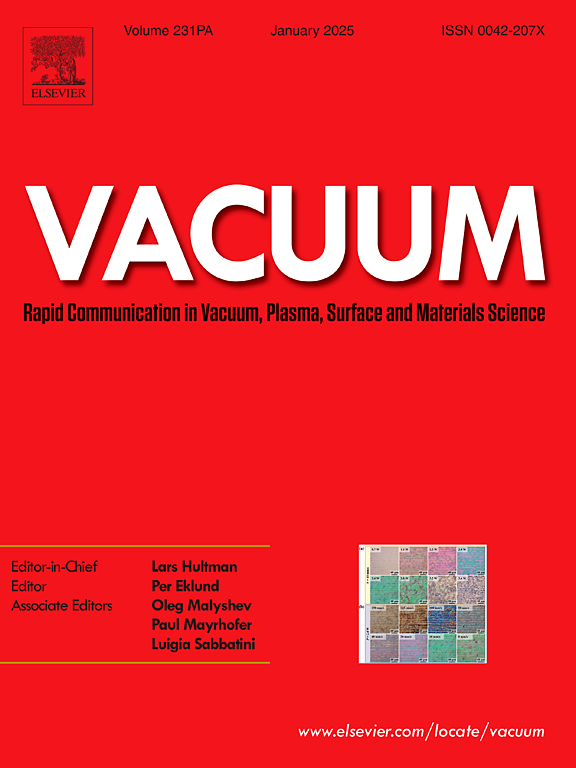Effect of composition and structure of Sb sources on evaporation properties and thin films
IF 3.8
2区 材料科学
Q2 MATERIALS SCIENCE, MULTIDISCIPLINARY
引用次数: 0
Abstract
Antimony (Sb) thin films for photodetectors and phase-change materials were prepared using a vacuum-resistive thermal evaporation system. The evaporation properties were assessed by comparing the deposition rates of Sb sources with varying compositions and structures. The morphology and structure of Sb films formed from Sb beads, Sb powder, and Pt-Sb powder were characterized. Evaporation characteristics are more stable in Sb beads than in Sb powders. The evaporation properties of Sb sources can be modified by adjusting the properties of the powders. Pt-Sb alloys contain both Sb and PtSb2 phases. Alloying significantly affects the evaporation characteristics of the Sb sources. All three Sb films were single-crystalline and composed of island-shaped Sb grains. The grain size and roughness of the films primarily depend on the deposition rate, with higher rates producing finer grains and lower roughness. In this study, the evaporation properties are modified by adjusting the composition and structure of the Sb source, thereby providing inspiration for related technological applications.
求助全文
约1分钟内获得全文
求助全文
来源期刊

Vacuum
工程技术-材料科学:综合
CiteScore
6.80
自引率
17.50%
发文量
0
审稿时长
34 days
期刊介绍:
Vacuum is an international rapid publications journal with a focus on short communication. All papers are peer-reviewed, with the review process for short communication geared towards very fast turnaround times. The journal also published full research papers, thematic issues and selected papers from leading conferences.
A report in Vacuum should represent a major advance in an area that involves a controlled environment at pressures of one atmosphere or below.
The scope of the journal includes:
1. Vacuum; original developments in vacuum pumping and instrumentation, vacuum measurement, vacuum gas dynamics, gas-surface interactions, surface treatment for UHV applications and low outgassing, vacuum melting, sintering, and vacuum metrology. Technology and solutions for large-scale facilities (e.g., particle accelerators and fusion devices). New instrumentation ( e.g., detectors and electron microscopes).
2. Plasma science; advances in PVD, CVD, plasma-assisted CVD, ion sources, deposition processes and analysis.
3. Surface science; surface engineering, surface chemistry, surface analysis, crystal growth, ion-surface interactions and etching, nanometer-scale processing, surface modification.
4. Materials science; novel functional or structural materials. Metals, ceramics, and polymers. Experiments, simulations, and modelling for understanding structure-property relationships. Thin films and coatings. Nanostructures and ion implantation.
 求助内容:
求助内容: 应助结果提醒方式:
应助结果提醒方式:


